Disc Herniations
Anatomy:
Recall the illustration of comparing an intervertebral disc to a jelly donut.
The word “herniation” refers to some body part coming out of where it should be.
Commonly, a herniated disc, which is also called a “ruptured” or “slipped” disc, occurs when part of the disc material (think of the jelly of the jelly donut) pops out of place (through the dough) and bulges into the spinal canal, sometimes placing pressure on the nerves.
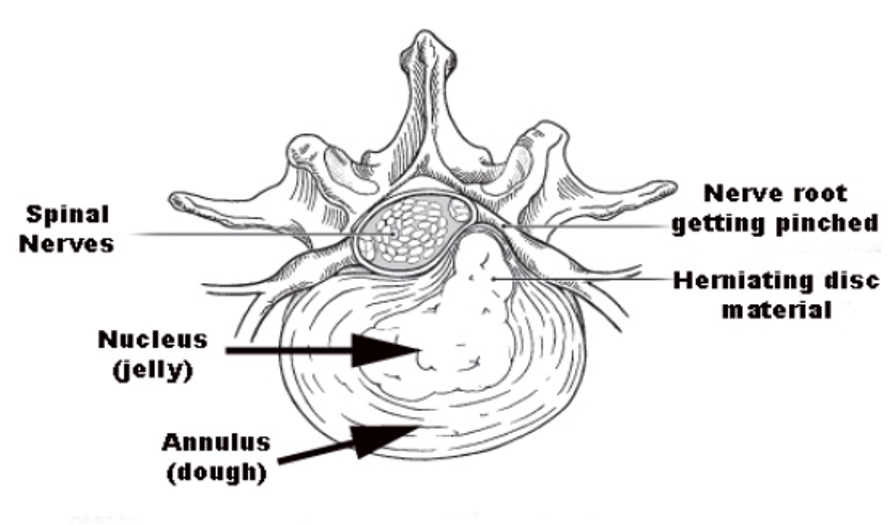
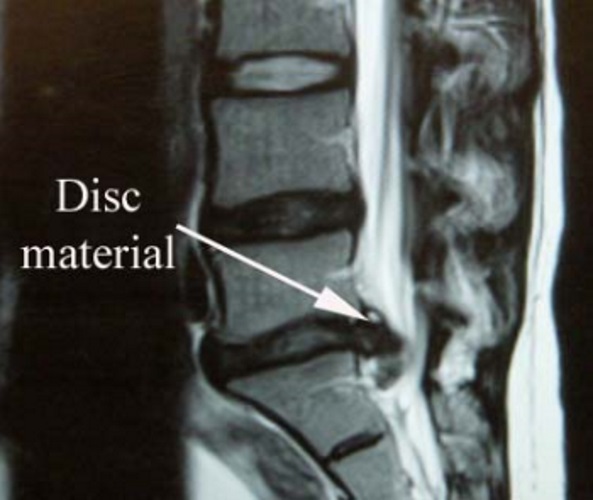
In this MRI shown here, a sagittal section (cutting the right and left in half), a very large herniation can be seen where the central material of the disc, like the jelly in a jelly donut, has squirted out and is pressing on the nerves causing leg and back pain.
As shown in the axial image (a section through the middle of the body, separating the top and bottom), the disc bulge can be seen compressing the nerves. This type of compression, aside from causing back pain from a disc that is not able to support the weight of the bone above, more commonly causes pain down the leg, referred to as radiculopathy (problem of the nerve root).

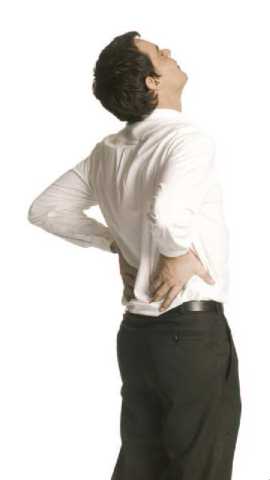
Causes
Disc herniations can occur in a variety of settings.
Acute (Sudden): Discs can rupture suddenly because of excessive pressure. For example, in a fall, or with a strong sudden lifting force, the annulus (dough) can rupture causing some extrusion of the nucleus (jelly).
Chronic (gradual): Discs can bulge over time as part of the wear and tear or degenerative process. Aside from for genetic causes, tissues can degenerate from exposure to accumulated stress over long periods of time, as can occur with people who have strenuous jobs that continue over many months and years. Repeated low level injuries add up over time. Symptoms also occur in a more gradual manner.
Patients can also have what is referred to as "acute on chronic" where there are degenerative changes that are made worse by a recent stress.
Symptoms
Nerve compression: By the nucleus (jelly) leaking out, the result can be pressure on a nerve (or nerves), to give symptoms in the distribution supplied by the involved nerves (see diagram here). Just like when you hit your funny bone in your elbow, with tingling in the small finger, the nerves in your back and neck have a certain area of the body where symptoms will occur.
The symptoms from the nerve root involvement can include
sensory changes: numbness, tingling
motor changes: weakness
reflex changes: would be noted by your doctor
The location of the symptoms helps determine your diagnosis. Communicating the exact source of your pain assists your doctor in determining which disc has probably ruptured.
Back pain: Due the the disc not being competent to hold the weight applied to it, back pain can result, which can be referred to the low back, buttock, or thigh region.
For large herniations in the lumbar region, there can be loss of control of bowel or bladder function. If bowel or bladder dysfunction occurs, you need to contact your doctor right away, or report to the nearest Emergency Room!!
(For cervical spine herniations when the spinal cord is compressed, the symptoms might also include problems with balance and fine motor movements as well. These problems can be serious and merit attention.)
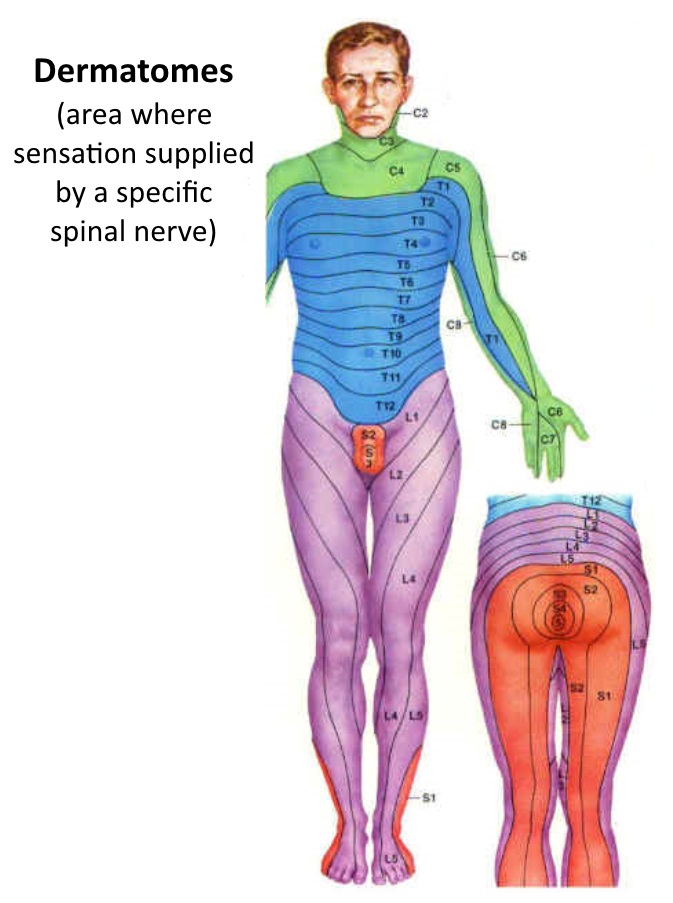
Other Examples
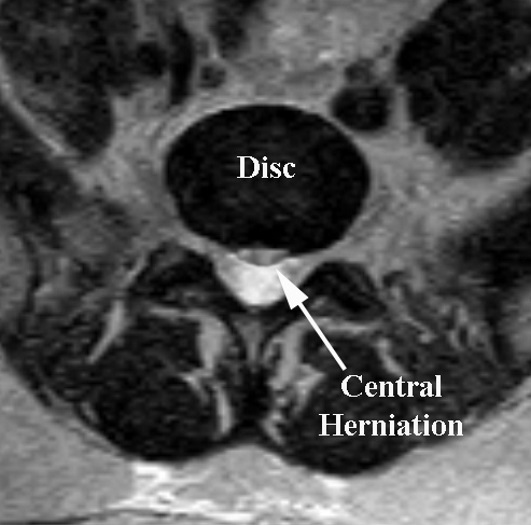
Central herniation: the bulge impacts the central or middle aspect of the spinal canal.
Paracentral Herniation (off to one side): As illustrated here, the herniation is compressing the nerves only on one side.


Far Lateral Herniation: This type of herniation can affect the nerve after it has already left the spinal canal and the foramen.
Diagnosis
Making the diagnosis of a herniated disc begins with a complete history of the problem and a physical examination.
The main questions your doctor will be interested in are:
--Did you have an injury?
--Where is the pain and when did it start?
--Do you have any numbness? Where?
--Do you have any weakness? Where?
--Have you had this problem or something like it before?
--Have you had any weight loss, fevers, or illnesses recently?
Remember, as noted above, problems with losing control of bowel or bladder function could indicate a possible surgical emergency
The evaluation may include taking X-rays of your back. Regular X-rays will not show a herniated disc, but they will give your doctor an idea of how much wear and tear is present in the spine and may show other causes of your problem.
To better understand the pertinent anatomy, and especially if there is consideration that injections or surgery might be needed, MRI or CT-Myelogram will be ordered.

